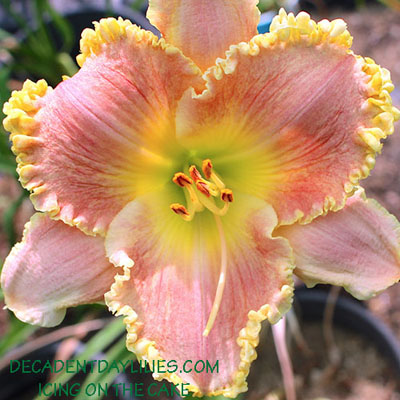One of the reasons why daylilies are favoured among a huge number of gardening enthusiasts, landscapers and professional horticulturalists, is their great variety of shapes and colours of their beautiful flowers. In addition, daylilies are also popular among these people because they can to be free of diseases and pests if they are grown in quality soil. The soil should contain plenty of balanced nutrients, with sufficient oxygen and water and you will get less diseases happening to your daylilies. The more time you put into your garden soil adding fully decomposed organic materials, the less pests and diseases the daylily will draw in. However, these captivating flowering plants do have diseases and pests from time to time. While daylily rust is one of the diseases that has been rapidly spreading and infecting daylilies across many parts of the country. There are other diseases that people do not know much about. One such disease is daylily mustard seed fungus.
What is it?
If you have never heard of daylily mustard seed fungus, the question that is ringing in your mind right now is what is daylily mustard seed fungus? Daylily mustard seed fungus is a fungal infection. It is normally found close to the crown of the daylily plant. It establishes itself as a mass of white cotton-like threads or sheets. This is often followed by tiny brown or black spores on the leaves. The size of the brown or black spores are the size of mustard seeds, hence the name of the disease. In some instances, the leaves of the plant will turn completely yellow.
Contributing Factors
As earlier stated, daylilies are often considered to be one of the more disease-free flowering plants. Nonetheless, several diseases can infect daylilies that are grown under bad cultural conditions, particularly if the plants are overcrowded, exposed to prolonged periods of wet and warm weather, or planted in soil that is poorly drained.
With respect to poor cultural conditions, you will normally find that if you only have two to five plants, the likelihood of contracting a disease is far less than if you grew a field of daylilies. As a general basic rule in gardening, the more plants of the same type you grow, the higher the probability of an infection becoming established in the site. Other factors such as weather can contribute to an increase or decrease in the possibility of an infestation. For example, cool and damp summers tend to increase the chances of diseases, especially, daylily mustard seed fungus.
How to Control Daylily Mustard Seed Fungus
It’s always a good idea to have knowledge about the common diseases so that you can diagnose an infestation whenever it arises. In order to control the daylily mustard seed fungus disease you should apply a fungicide instantly, you recognise the signs and symptoms, we have highlighted above. You should also dig up the plant and get rid of the directly infected leaves. You can soak the plant’s crown in a fungicide solution, then replant into fresh new areas of your garden. Additionally, you should discard the fungi diseased soil out of your garden as well, after removing infected plants. Before you decide to replant anything else in the same planting spot you should, revive the soil by adding fresh, new, disease free soil to that part of the garden bed.
Alternatively, you can set up a quarantine area where you can move the plants that you suspect of being infected. This will offer you a chance to closely monitor and treat the plants if need be.

